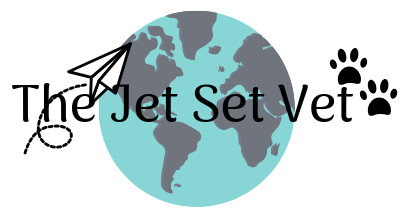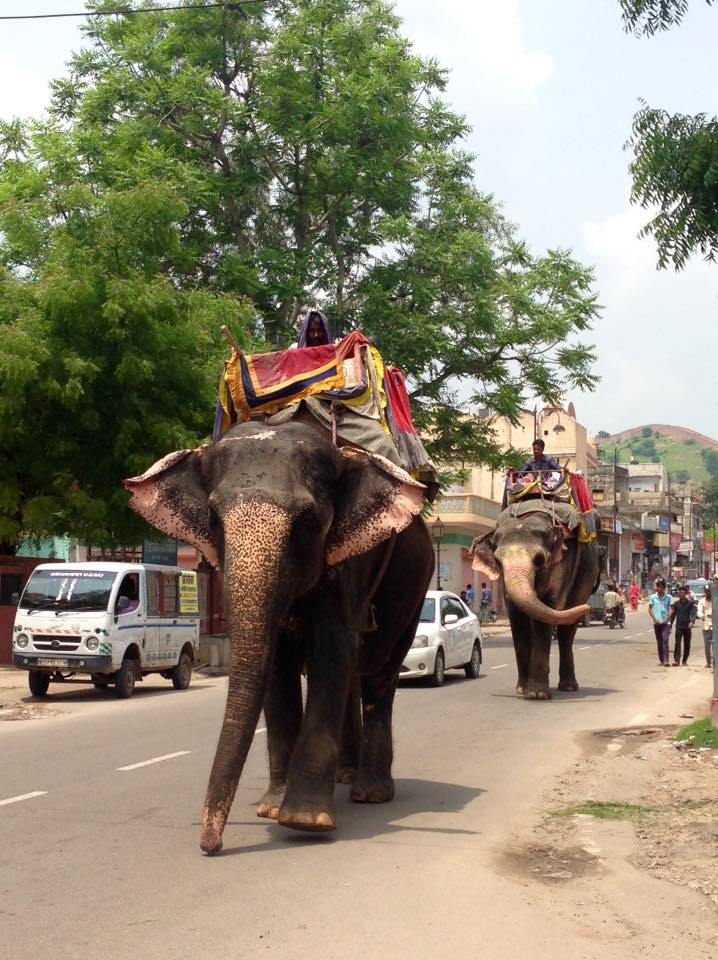On our final ‘day off’ while at HIS we found ourselves buzzing with excitement at the chance to finally meet the elephant doctors! Our day began the day dog catching (can’t beat a good 5AM start!) and at 7AM got the fellas to drop us off in the city centre to search for breakfast. We came to discover that this was a horrendous idea as what we hadn’t realised at the time is that NOTHING in India opens until after 10AM. By 8 o’clock we were tired and absolutely ravenous, we had nothing to do but wander aimlessly around the pink city being harassed by little beggar children in the street which I always found to be incredibly distressing. We did a lot of trapesing up and down the battlement of streets in hope that something would be open early but found no success. It’s incredible what a bad mood being hungry and tired puts you in, all English niceties go out the window and every Indian who came up to bother us which we usually dealt with politely but firmly were getting glared and snarled at and we truly had reached the end of our tethers. It was times like that when in India, feeling tired, sweaty and emotionally drained when I really did feel desperately sorry for celebrities as I felt being a white person in India really gave you a taste of that in certain situations. People pull on you and leer at you, point, stare and come right up to your face to take pictures. Personal space is not allowed which we Brits value so dearly and it really got to the point where I struggled to be good natured about it.

At 9 o’clock the city slowly started to come alive so we went to the Palace of the Winds which had some great views over the city of Jaipur. We took a few token snaps but by this point, especially with all the walking and stair climbing the hunger shakes had really set in. We decided to try the City Palace in hopes of seeking out a café and despite the many entrances, we had to walk around the entire thing until we fund one that would let us in. Thankfully the palace restaurant took pity on us and opened a full hour early for us to grab some food (It was a very good job as I think we were both incredibly close to throwing a full-on hunger-driven temper tantrum by this point!). The restaurant was 5-star standard which equates to paying roughly the same as you would for dinner out at home, but the food was fantastic (I had a veggie burger and fries… for breakfast and it was the best thing ever!).

After eating our fill and feeling much happier for it, it was time to meet the elephant vet. Both Beth and I are major exotic animal nerds and were keen to investigate the elephant’s plight in the Pink City. JEWEL, the Jaipur Elephant Welfare foundation were a team of vets who treated Jaipur’s working elephant population and strived to improve their working and husbandry conditions and we were keen to lend a hand and see what it was like to be an elephant vet in India. We got a taxi to Amer where we were dropped off at the police station where we were meant to meet one of the vets. In doing so we managed to cause quite the scene, all the passing Indians could be seen pointing and chattering animatedly – you could practically hear them making up elaborate stories as to why two white girls where sat at the police station. We had the dilemma of trying to spot the elephant vets and trying not to be too rude to any of the numerous men who approached us uninvited, just in case one of them was the vet who at this point we had only spoke to over the phone.
JEWL elephant project began with Dr Chowla at Help in Suffering some years previously before going solo in recent years and having the sole purpose of providing free veterinary care to the working elephants of Jaipur. We were incredibly excited when the truck rolled up to pick us up, especially when they said we were going to the elephant village. This was a government project which, like many things in India was started with great vigour in hopes of becoming a tourist hot spot but slowly dwindled as the funding dried up. The village housed 130 elephants with their Mahouts and their families and included a school for the village children and large airy garages to “park” your elephant attached to the keepers houses. There was a large lake for bathing the elephants and lots of greenery in the surrounding area. It was a shame the government hadn’t persevered as this settlement could have been a fabulous complex and with the help of JEWL who had worked to ensure the facilities were elephant friendly, it could have been incredibly mutually beneficial. The build had taken the elephant’s welfare into account; dipped floors were provided in the elephant garages to help distribute the elephants weight when they lie down (common myth squashed: elephants do not sleep standing up and need a comfy weight supporting substrate to lie on) and rubber matting to prevent pressure sores. We met a mahout who proudly introduced us to his elephant, Ginjai (interestingly all the working elephants are female as decreed by the government who consider males too dangerous and unpredictable) who had vitamin deficient cataracts due to her previous owner feeding an inappropriate diet. He was incredibly loving towards her and told us his last elephant had died four years previously who had been in his family his whole life. We chatted with him for quite a while and he told us his elephant ate 10kg of japatis a day ( because animals in India don’t seem to be able to function without japatis!) along with corn, sugar cane and hay and that she worked at the fort but had every other day off, which all things considering was quite nice working hours and that she knew 37 commands. We took a few obligatory photos with this lovely lady and got sprayed with water as she was cooling herself before moving on to the next elephant which had a wound to treat.
Rhavindra, an incredibly knowledgeable and kind natured man was an elephant para-vet. He told us lots about the elephants and their histories as we went around. He said the average life span for a working elephant in Jaipur was 75 years which was fantastic considering in UK zoos they struggle to get them to see their 50s. I guess despite the work sometimes being difficult and causing its own problems, it also keeps them moving and well stimulated which a zoo set up can’t provide as easily. We saw a number of wounds and abscesses, many of which were pressure sores from lying on inappropriate surfaces. Their skin is so unique we were told it takes a long time to heal so despite many of these elephants now being housed much more appropriately, the vets were still treating the sores caused by previous housing. On a slightly gross note, I have never seen such fantastic abscesses, the elephant team squeezed what seemed like a small hole and masses of cottage cheese like pus came rocketing out of them, incredibly satisfying and much better for the elephant to get rid of all that gunk!
We were also taken to see a male, despite now being unemployed as a tourist attraction, some of the mahouts had such strong bonds to their elephants they kept them anyway and used still used them for weddings and other celebrations. We also had the chance to see a baby elephant. Despite births between working elephants being rare due to conditions not lending itself to reproductive success, sometimes breeding was successful and we got to see the product of one such success. The baby was about 3 years old and was parked with a foster mother to teach him the ropes. You could tell his manners were still a work in progress but he was incredibly curious and keen to touch us with is incredibly sensitive trunk.
We were really happy to be able to report that the majority of elephants were really well cared for and in good condition. It was nice to see what a difference education and a foundation like JEWL can make such a difference. All Jaipur elephants could receive free veterinary care including; worming, vaccinations against rabies, tetanus and foot and mouth, wound care and education for Mahouts on how to best care for their elephants. It was also incredibly humbling to see that most of these people really did care deeply about their elephants and wanted the best for them. However, towards the end of the day we did see the darker side of elephant handling. We went to see an elephant who at just 43 years old had completely given up on life. She was skinny, dehydrated and hunched with pain and fear, her owner was a nasty little man who clearly enjoyed having control over what should be such a magnificent creature. She had sores all over her and it was clear she had suffered at the hands of this man who brandished a large, metal ankur, a hook which has largely been banned and moved away from as a medieval method of control. She had foot rot on both hind limbs, filled with pus and necrotic tissue despite the months of treatment JEWL had dedicated to it. It was a sobering lesson for us to see that work most definitely still needed to be done in elephant welfare.






